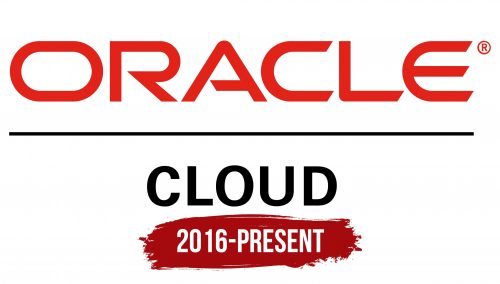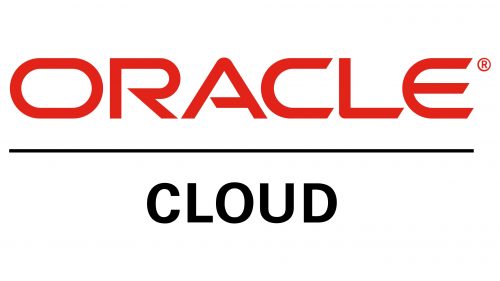The Oracle Cloud logo instantly immerses the viewer in cloud technologies, providing space for every client’s production processes and computations. The emblem symbolizes the scale and power of cloud storage, ready to meet any business needs. The bold, dynamic letters of the visual symbol emphasize the acceleration of workflows and the efficiency clients gain through the service’s tools and solutions.
Oracle Cloud: Brand overview
Oracle Cloud’s story began in 2008 when the company—known for its databases and enterprise software—began exploring cloud computing. At that time, Oracle recognized the rising importance of cloud technology and the need to adapt its products to this new model.
In 2010, the company launched its first cloud platform, the Oracle Cloud Platform. This allowed customers to run its applications in a cloud environment. Although this was a major step forward, the company’s services were still more limited than its competitors.
A key milestone came in 2012, when the company introduced several cloud services, including Database Cloud Service, Java Cloud Service, and Application Cloud Service. These offerings enabled customers to access core technologies in a cloud environment.
2014, the company expanded its capabilities by introducing Platform as a Service (PaaS) and Infrastructure as a Service (IaaS). These services allowed customers to run applications and develop, test, and deploy their solutions using the infrastructure provided.
The release of Cloud Machine in 2015 was a significant innovation. This hybrid solution allowed businesses to run cloud services in their own data centers, making it a good option for companies that needed cloud benefits but had regulatory or data control concerns.
In 2016, the company introduced Cloud at Customer, allowing users to use cloud computing while keeping their data in-house. This service was particularly beneficial for companies with stringent security or regulatory requirements.
In 2017, the company took a major step by releasing Autonomous Database, the first autonomous system that used machine learning to automate key tasks like security, backups, and performance tuning.
The organization continued to build on its autonomous services in 2018 with the launch of Autonomous Transaction Processing and Autonomous Data Warehouse. These services were designed to reduce the complexity of data management, freeing customers to focus on using data to drive business outcomes.
In 2019, the company launched its Gen 2 Cloud Infrastructure, specifically designed for enterprise clients. This new generation offered better performance and a more secure architecture than the first generation.
The dedication to cloud innovation continued in 2020 with the introduction of Dedicated Region Cloud@Customer. This fully managed solution provided all the public cloud capabilities within customers’ data centers, appealing to industries with strict regulatory requirements, like healthcare and finance.
In 2021, Cloud Lift Services were introduced, designed to help clients move their workloads to the cloud with access to tools and expert resources to simplify the migration process.
In 2022, the company continued to enhance its cloud offerings, focusing on integrating machine learning and artificial intelligence into its services. The business also expanded its global presence by opening new regions to ensure better performance and compliance with local regulations.
Over the years, this platform has evolved to meet the market’s and its customers’ changing demands. From its early ventures into cloud computing, the organization has grown into a comprehensive platform offering Infrastructure as a Service (IaaS), Platform as a Service (PaaS), and Software as a Service (SaaS). The company remains committed to advancing its technologies and providing innovative solutions for managing data and applications in today’s digital world.
Meaning and History
What is Oracle Cloud?
This comprehensive suite of cloud computing services helps companies of any size take advantage of Oracle’s enterprise technologies. The platform offers a wide range of services, such as Software as a Service (SaaS), Platform as a Service (PaaS), and Infrastructure as a Service (IaaS), all working in harmony. The platform focuses on security and performance. It is capable of handling the management of complex enterprise applications while also supporting advanced AI and machine learning models. The autonomous database, managed, secured, and restored without intervention, is a key product showcasing the innovative approach to cloud solutions.
2016 – today
The Oracle Cloud logo is designed concisely and minimally, reflecting the essence of cloud technologies. The name is divided into two parts, each carrying its meaning. The first—”Oracle”—is written in large red letters, symbolizing the company’s strength and power. The red color is associated with energy and activity, emphasizing the company’s leadership in cloud solutions and technologies. The sharp elements of the font hint at focus and precision, tailored to meet clients’ specific needs.
The word “Cloud” is placed beneath “Oracle,” visually highlighting the offering—cloud solutions. Written in a simple black font, it conveys the idea of accessibility and clarity of the service. A thin line between the words symbolizes the distinction between the brand and its offering, showing that Oracle has a long history and provides cutting-edge cloud technology solutions.
The logo’s overall feeling is one of openness and flexibility. The ample space within the visual symbol represents the vastness and range of possibilities that Oracle Cloud offers. This space serves as a metaphor for cloud storage, which can be filled with data, processes, and solutions based on the client’s needs.
This concept reflects the brand’s philosophy of providing technology that can be adapted to each user’s needs.





